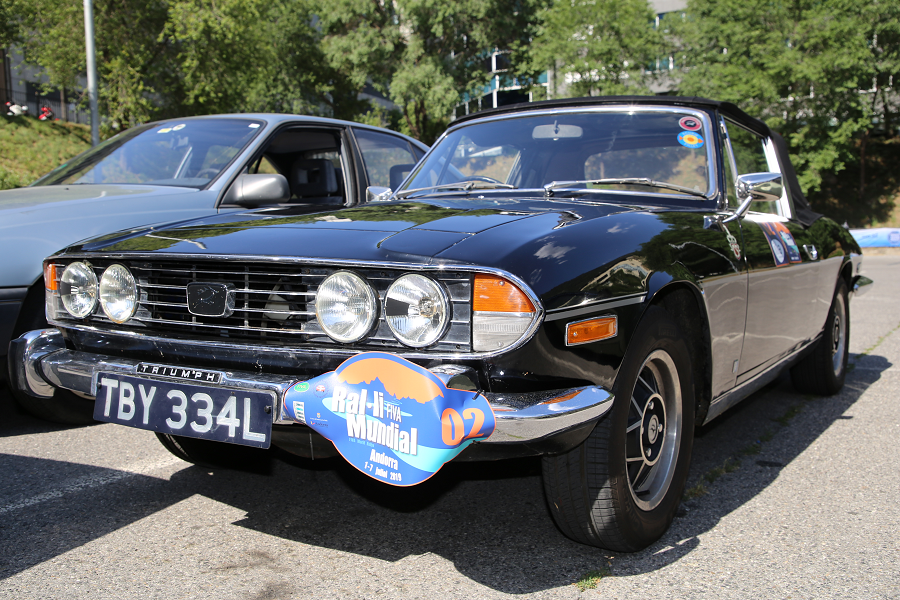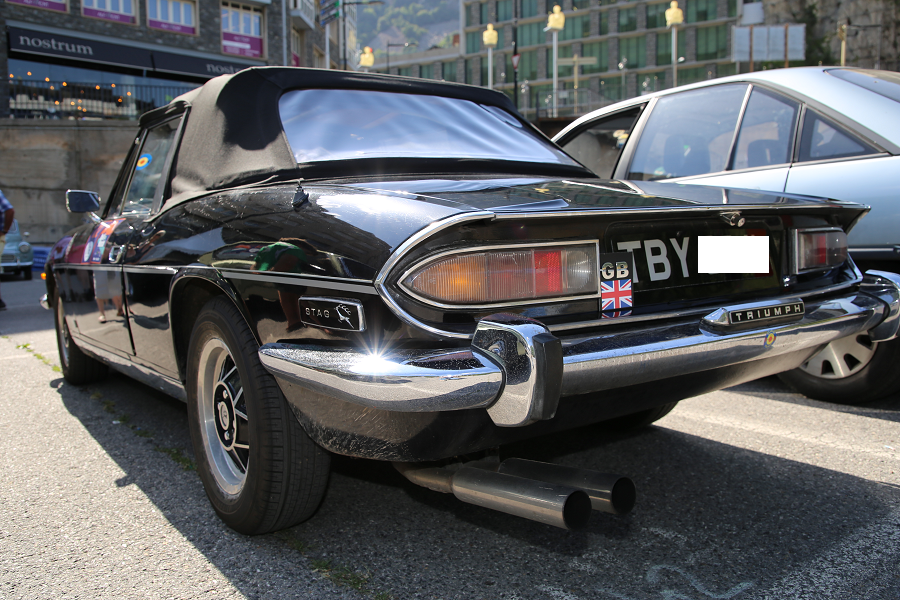Triumph Stag. Black cabriolet
The Triumph Stag is a 2+2 sports tourer which was sold between 1970 and 1978 by the Triumph Motor Company, styled by Italian designer Giovanni Michelotti.
Envisioned as a luxury sports car, the Stag was designed to compete directly with the Mercedes-Benz SL class models. All Stags were four-seater convertible coupés, but for structural rigidity – and to meet proposed American rollover standards of the time – the Stag required a B-pillar “roll bar” hoop connected to the windscreen frame by a T-bar. A body color removable hard top with defrost wires on the rear window, full headliner and lever operated quarter windows was a popular factory option.
The car started as a styling experiment cut and shaped from a 1963–64 pre-production 2000 saloon, also styled by Giovanni Michelotti. His agreement was, if Harry Webster, Director of Engineering at Triumph, liked the design, Triumph could use the prototype as the basis of a new model. Webster loved the design and took the prototype back to England. The result, a two-door drop head (convertible), had little in common with the styling of its progenitor 2000, but retained the suspension and drive line. Triumph liked the Michelotti design so much that they propagated the styling lines of the Stag into the new T2000/T2500 Mark II saloon and estate model lines of the 1970s.
Triumph gave new projects four letter development code names (e.g. Bomb for Spitfire) and interestingly, Stag was the only Triumph to take its development code name into production.
The initial Stag design used the saloon’s 2.0-litre six cylinder engine which was intended to be uprated to 2.5-litres for production cars, but Webster intended the Stag, large saloons and estate cars to use a new Triumph-designed overhead cam (OHC) 2.5-litre fuel injected (PI) V8. In 1968, under the direction of Engineering Director Harry Webster and his successor as Chief Engineer, Spen King, the new 2.5 PI V8 was enlarged to 2,997 cc (3 L; 183 cu in) to increase the power available.












